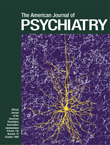Olanzapine-Induced Tardive Dystonia
Ms. A was a 40-year-old African American woman with psychosis. She was diagnosed with schizophrenia and treated with loxapine, 35 mg/day, and her symptoms completely remitted. Her dyskinesia was first noted as bruxism. Ms. A’s loxapine dose was decreased to 5 mg/day, yet the bruxism persisted. Then blepharospasm developed, prompting the diagnosis of tardive dyskinesia. Her loxapine treatment was discontinued, and trazodone treatment, 50 mg at bedtime, was initiated. Over the following months, Ms. A experienced increased blepharospasm, lip tremor, difficulty swallowing, and aphonia. Treatment with reserpine, haloperidol, and botulinum toxin was unsuccessful. Eventually, her condition was successfully treated with vitamin E, 1600 IU/day. Ms. A then experienced a manic episode with psychosis and was rediagnosed with bipolar disorder. She received divalproex, 1250 mg at bedtime, and partially responded. Later, olanzapine, 10 mg at bedtime, was added, and her symptoms fully remitted. Seven months later, Ms. A’s neck started intermittently turning to the right. Soon thereafter, she was in marked distress, with severe, frequent torticollis. She also displayed severe dysphonia, blepharospasm, and grimacing; moderate lateral and opening jaw movements; and mild upper extremity choreiform movements, lip pouting, back arching, and head bobbing. Her total Abnormal Involuntary Movement Scale (AIMS) score was 15. Clozapine treatment was initiated, and her dose was titrated to 200 mg/day, while her olanzapine treatment was discontinued. At her 4-month follow-up examination, her dystonia had decreased by 50%, and she felt significantly less distressed. Her AIMS total score was 8; she had minimal blepharospasm and grimacing, mild lip and jaw movements, and moderate torticollis.
References
Information & Authors
Information
Published In
History
Authors
Metrics & Citations
Metrics
Citations
Export Citations
If you have the appropriate software installed, you can download article citation data to the citation manager of your choice. Simply select your manager software from the list below and click Download.
For more information or tips please see 'Downloading to a citation manager' in the Help menu.
View Options
View options
PDF/EPUB
View PDF/EPUBGet Access
Login options
Already a subscriber? Access your subscription through your login credentials or your institution for full access to this article.
Personal login Institutional Login Open Athens loginNot a subscriber?
PsychiatryOnline subscription options offer access to the DSM-5-TR® library, books, journals, CME, and patient resources. This all-in-one virtual library provides psychiatrists and mental health professionals with key resources for diagnosis, treatment, research, and professional development.
Need more help? PsychiatryOnline Customer Service may be reached by emailing [email protected] or by calling 800-368-5777 (in the U.S.) or 703-907-7322 (outside the U.S.).

